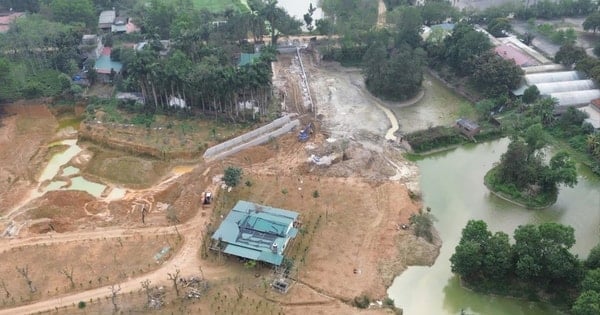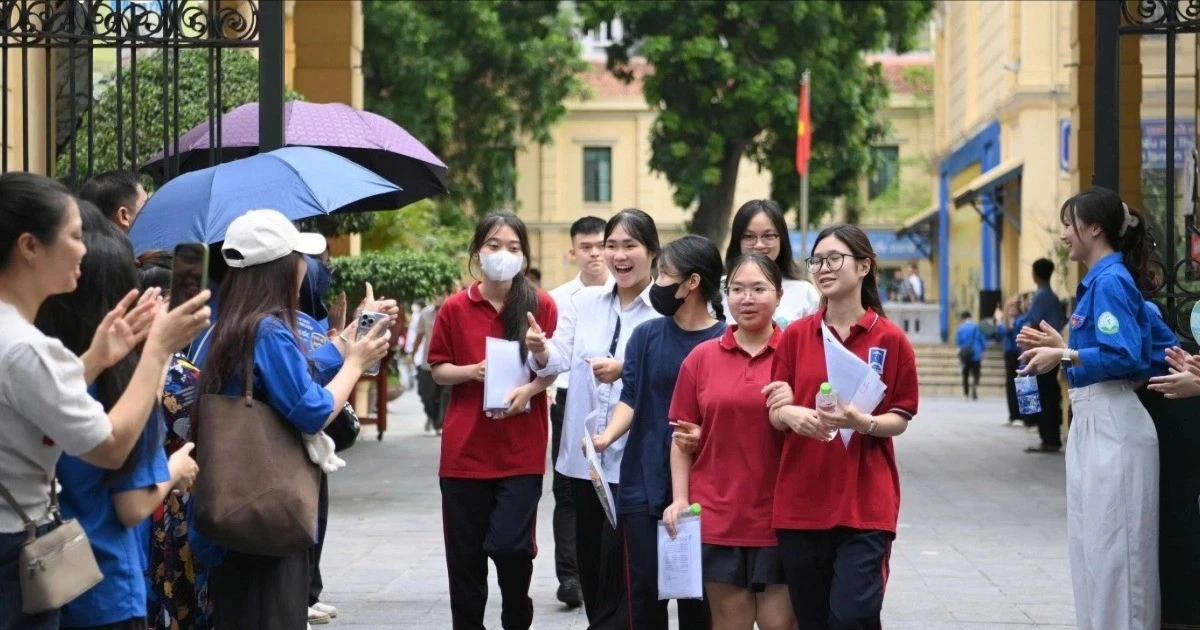Many industries have become brands
Phu Lang pottery village (Phu Lang commune) is one of the outstanding traditional craft villages of Bac Ninh . With more than 200 households, the craft village attracts more than 1,000 workers directly involved in production and business. Ms. Dang Thi Tam, Director of Phu Lang Pottery Cooperative, said: Phu Lang pottery village is not only famous for its beautiful ceramic products but also stands out in developing a sustainable production model and protecting the environment. Currently, in addition to traditional products, artisans have also diversified many product lines, especially learning from the experience of Japanese ceramic artisans to develop many high-end products to increase value. In particular, they focus on compact ceramic products with artistic value such as flower arranging tools, or high-class food and drink containers. Some unique artistic ceramic products still use the traditional method of using firewood to burn, contributing to environmental protection.
 |
Ms. Dang Thi Tam, Phu Lang village, introduces craft village products to foreign tourists. |
At the same time, cooperatives, enterprises, and production households also cooperate to develop tourism and related services. Thanks to that, each year, revenue from Phu Lang ceramic products reaches more than 100 billion VND, the average income of workers is from 7-9 million VND/month. The ceramic profession helps improve the lives of local people, enriching the unique cultural features of Kinh Bac land.
Along with Phu Lang, Tho Ha residential group, Van Ha ward has long been famous for its traditional rice paper making profession. A representative of Van Ha ward People's Committee informed that Tho Ha currently has more than 300 households making rice paper with more than 1,000 regular workers participating. Tho Ha rice paper making profession creates jobs on the spot, increases income for people, and helps many households become well-off.
| There are more than 500 craft villages and villages with crafts in operation in the province. According to incomplete statistics, the whole province has about 100,000 workers directly involved in production in craft villages and rural craft establishments. The orientation for developing rural craft villages in the province until 2030 is to focus on selecting and developing typical craft villages and crafts with high economic value, cultural content, and competitiveness in the direction of investing in scientific and technological innovation, ensuring the quality and value of craft village products. |
Not only famous for its traditional rice paper making, Tho Ha also preserves ancient architecture, banyan trees, ferry, communal house yard and long-standing customs, becoming a favorite destination for many tourists. Coming to Tho Ha, visitors can experience the process of making and drying rice paper and enjoy local specialties in the peaceful setting of a Northern village.
In recent times, industries and localities have clearly identified advantageous industries to prioritize investment and development, meeting the requirements of commodity production associated with the consumer market, developing into OCOP products. Many models focus on developing craft villages and industries with brand building, creating added value and opportunities for economic restructuring on the spot. Many typical local products are gradually building brands such as: Van village wine, Tho Ha rice paper, Ke rice paper, Chu noodles; Dong Ky, Phu Khe, Huong Mac fine art wooden products, Phu Lang pottery, Dong Ho folk painting village, Dai Bai bronze casting village, Xuan Lai bamboo craft village...
Prioritize the development of highly competitive craft villages
The process of merging and implementing the two-level local government has created a large space for the development of rural industries. With a larger market, craft villages and rural industries, especially handicrafts, traditional industries, and high-tech agriculture, will have more opportunities to develop strongly. These include processing and preserving agricultural, forestry, and aquatic products; handicraft production; processing and handling raw materials for rural industry production; production and trading of ornamental plants; and services for production and rural residents' lives. The main forms of production are individual households producing small-scale handicrafts, cooperatives, cooperative groups, and private enterprises.
 |
People of Tho Ha residential group (Van Ha ward) dry rice paper. |
In addition to traditional occupations, many households and production establishments in rural areas in the province have developed new occupations suitable to actual conditions and modern consumption trends such as: Manufacturing wooden furniture, processing clean food, growing and processing medicinal herbs, processing garments, packaging... These models make good use of local raw materials and labor, expanding development space for rural areas.
However, along with the achieved results, the development of rural industries in the province still has some difficulties and limitations. Production and business establishments are mainly small-scale households, lacking connections, low efficiency, and have not fully exploited their potential and advantages. Products are not really diverse, competitiveness is still low, and have not met the needs and tastes of consumers, especially for handicraft products...
According to the leader of the Provincial Cooperative Union, the orientation for developing rural industries in the province after the merger until 2030 is to focus on selecting and developing typical craft villages and industries with high economic value, cultural content, and competitiveness in the direction of investing in scientific and technological innovation, ensuring the quality and value of craft village products; promoting investment and developing into a commodity economy. At the same time, the province is interested in investing in preserving and promoting the value of traditional industries associated with the cultural heritage of Bac Ninh - Kinh Bac. Localities have specific plans and roadmaps to handle, close, and convert economic models for craft villages and production facilities that cause environmental pollution.
Along with that, the province is orienting the development of rural industries based on the advantages of culture and community tourism, ecology and OCOP products, contributing to preserving identity and improving livelihoods for local people by promoting the image of craft villages with each group of rural industries at tourist destinations, product display and sales points inside and outside the province...
Bac Ninh rural industries have great potential for strong development in the future. Promoting this potential will not only help improve the lives of rural people but also contribute to promoting the sustainable development of the province's economy.
Source: https://baobacninhtv.vn/co-hoi-phat-trien-nganh-nghe-nong-thon-sau-sap-nhap-postid423938.bbg


























![[Photo] An Phu intersection project connecting Ho Chi Minh City-Long Thanh-Dau Giay expressway behind schedule](https://vstatic.vietnam.vn/vietnam/resource/IMAGE/2025/8/21/1ad80e9dd8944150bb72e6c49ecc7e08)





































![[Photo] Politburo works with the Standing Committee of Hanoi Party Committee and Ho Chi Minh City Party Committee](https://vstatic.vietnam.vn/vietnam/resource/IMAGE/2025/8/21/4f3460337a6045e7847d50d38704355d)

































Comment (0)